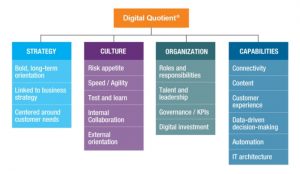Change is inevitable, and the strongest companies across verticals recognize that ongoing change is a necessary ingredient to remaining competitive. Consumer behaviors today are changing at an unprecedented pace thanks to rapid technological advancements; most brands have robust dedicated social media teams, whereas ten years ago social media was the last item on a marketing team’s checklist. Many brands are moving their operations from off to online as a result of more customers purchasing goods through ecommerce channels. Businesses today have to be nimble and willing to adapt to the dynamic fluctuations of the market.
Although change might be necessary, that doesn’t mean it’s easy. Employees jump at the prospect of any company change because changing strategies and company directions might spell re-evaluation of individual positions. Too often company leaders don’t get head of change communications, letting the employee rumor mill churn and imaginations run wild. But communicating all potential company amendments is not necessarily the best course of action either. Often, early restructuring ideas never come to fruition, and hinting at the possibility will only upset and distract employees. Before making the decision to enact a change in policy or operations, and subsequently, planning the disclosure of this change, company leaders should consider all of the variables that play a part in change communications: including employees resistance, timing, and follow-up processes. When it comes to announcing a major brand alteration or evolution, winging it is never a good option. Focusing on transparency, big-picture communications, and follow-up conversations are paramount to successfully navigating the rocky road of change.
Be Transparent
No one likes uncertainty in the office. When employees are unsure about the future of their positions it leads to distraction and low morale. The more communicative you are, the better you’ll be able to guide employees through any transition. Furthermore, the earlier you can communicate any sort of upheaval, the easier it will be for all individuals to adjust. This might mean beginning conversations with managers and team leaders to prepare them for associate questions following the company-wide announcement. Of course some details cannot be disclosed to the entire company, either for legal purposes or to protect individual employees, but leaders should try to share as many details as possible so that imaginations don’t swirl.
Be Human
Face-to-face conversations are always more effective than mass email messages. Sure, for some multi-national corporations holding company-wide meetings is just not possible. However, facilitating individual office meetings or town halls will help all employees process the information more seamlessly. Nuances tend to get lost in general email communications. Email blasts are also seen as cold and uninviting; employees may have questions following the message but will not feel encouraged to speak up. Open communication is the most important facet of change management.
Paint The Big Picture
It’s not enough to simply communicate what is changing at the company, leaders have to communicate why this change is being made. If company leaders announced the lay-off of an entire department, or the discontinuation of a product that has been an essential part of the company’s existence, without explanation, employees will feel abandoned. Everyone on a staff should be made to feel like their input and their work matters, and failing to contribute the reasoning behind a major decision sends the signal that individual voices are not valued. If you communicate a major change in relation to external forces like customers, investors, or competitive developments, it will be easier for employees to make sense of the overall message.
Create an Open Door Policy
The leadership’s team job is not finished once the message has been delivered. Employees have to be given the opportunity to ask questions and voice their opinions. Implementing an open door policy that encourages individuals to come forward and have conversations with managers or the leadership team is the best way to mitigate potential chaos. Following a major disruption, employees across teams are bound to feel vulnerable, and these feelings of uncertainty will only grow more prominent if they are not given an adequate opportunity to ask questions and express concerns.
Communicate Next Steps
“What’s next?” is a collective concern among teams following a major announcement. If a leadership team announces the end of a major product or department, they must also communicate where the company, as a whole, will go from there. For example, perhaps an advertising agency decides to discontinue its offline division. Employees will want to know if this means that there are future plans to expand digital teams, or if the rest of the company will continue on as is. Offering direction and clarity around roles will help employees return to their responsibilities without feeling distracted or threatened.
The most important asset of any company is its people. When change arises, people have to be put first; and when companies fail to properly communicate transitions they risk diminishing company-wide morale. A workplace seething with low morale leads to unproductivity and higher turnover rates, not to mention individual depression. But a workplace where transparency and two-sided communication are valued can better position itself to retain talent.
(34)
Report Post







